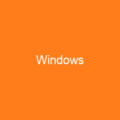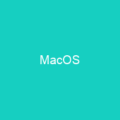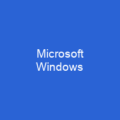VLC Media Player: A Gateway to Multimedia Freedom
Imagine a world where you could play any video or audio file with just one click—no matter the format or source. That’s what VLC media player offers, and it does so for free!
The Journey of VLC Media Player: From Satellite to Streaming
VLC media player is more than just a tool; it’s a journey through time and technology. How did this humble project start? The VideoLAN software, which eventually became VLC, was born in 1996 as an academic project at École Centrale de Paris. Its original purpose was to stream videos from satellite dishes across a campus network. But the developers had bigger plans.
A Rewriting of History
In 1998, VLC was rewritten from scratch and released under the GNU General Public License on February 1, 2001. The player’s name changed to VLC media player due to the absence of a client/server infrastructure. This rewrite marked the beginning of what would become one of the most versatile multimedia players in the world.
The Cone Icon: A Symbol of Networking
The cone icon used in VLC is a nod to traffic cones collected by École Centrale’s Networking Students’ Association. The design was changed from a low-resolution hand-drawn version to a higher-resolution CGI-rendered version in 2005, symbolizing the evolution of networking technology.
Development and Growth
VLC has undergone significant development over the years. Version 1.0.0, released on July 7, 2009, was a milestone. It included more than 380 modules, making VLC capable of handling almost any video content format. The player’s core creates its own graph of modules dynamically depending on parameters, ensuring that it can adapt to various file types and sources.
Multi-Platform Marvel
VLC is cross-platform with versions for Windows, macOS, Linux, iOS, Android, tvOS, ChromeOS, Windows Phone, BSD-based systems, Solaris, BeOS, OS/2, and Syllable. This versatility makes VLC a go-to choice for users worldwide.
Features Galore
The default GUI is based on Be API on BeOS, Cocoa for macOS, and Qt 5 for Linux and Windows. VLC supports highly customizable skins through the skins2 interface, but not in the macOS version. The player offers a range of features such as video filters, interactive zoom, gamification for playback, audio equalizers, and more.
APIs and Integrations
VLC can be used with other programs through various APIs, including libVLC API, VLCKit, LibVLCSharp, JavaScript API, D-Bus controls, Go bindings, Python controls, Java API, DirectShow filters, Delphi/Pascal API, and Phonon multimedia API for Qt and KDE applications. This integration capability makes VLC a powerful tool for developers.
Legal Controversies and Bans
VLC has faced legal challenges, particularly in India where it was banned under the provisions of the Information Technology Act, 2000. However, this ban was later lifted after a legal notice was sent to the Indian government. The software can also be used to launch malware on Windows machines, and its use in China has raised concerns about security issues.
Conclusion
VLC media player is not just a tool; it’s a gateway to multimedia freedom. From its humble beginnings as an academic project to becoming one of the most versatile multimedia players in the world, VLC continues to evolve and adapt. Whether you’re streaming videos from satellite dishes or playing back damaged files, VLC has got you covered. So, why wait? Download VLC today and experience the ultimate in multimedia playback!

You want to know more about VLC media player?
This page is based on the article VLC media player published in Wikipedia (retrieved on January 13, 2025) and was automatically summarized using artificial intelligence.







